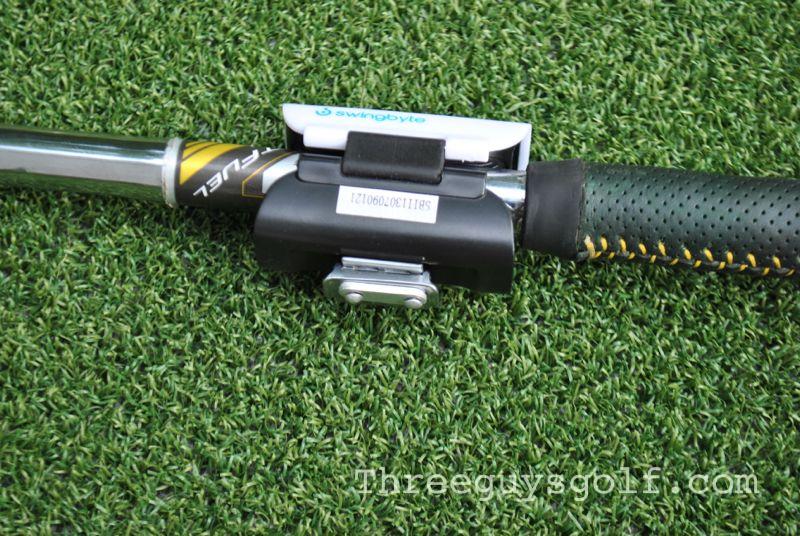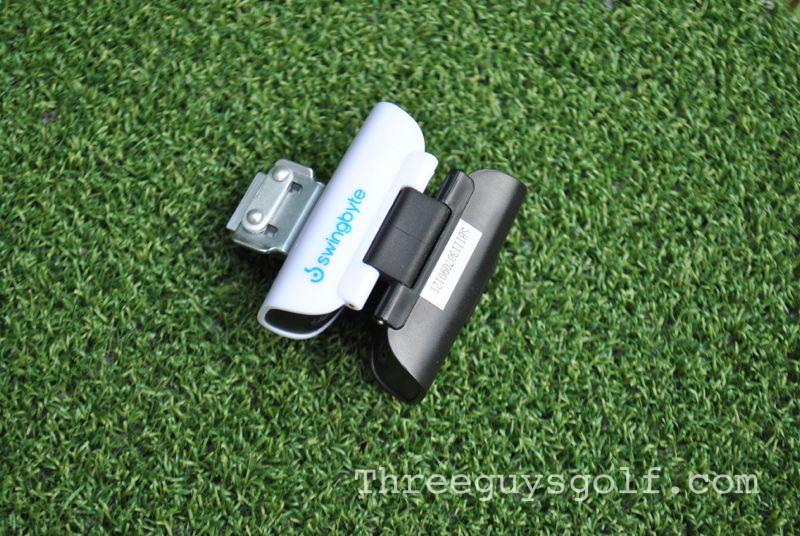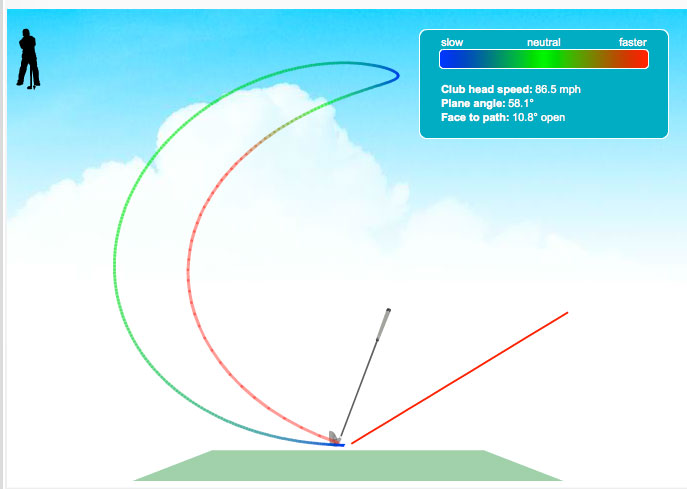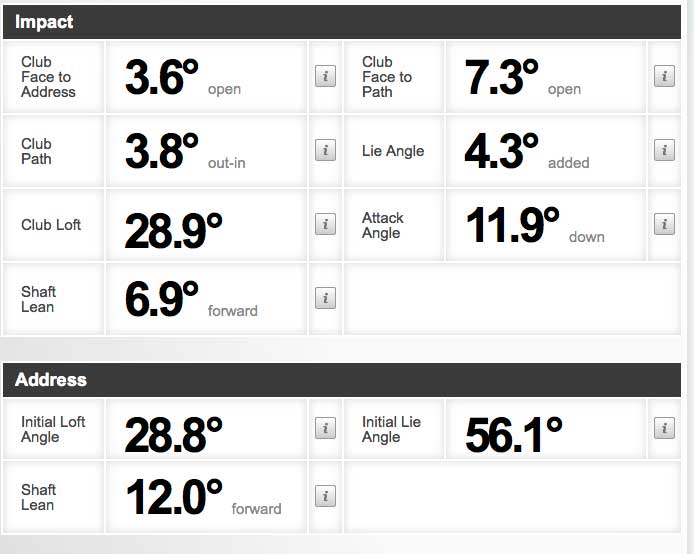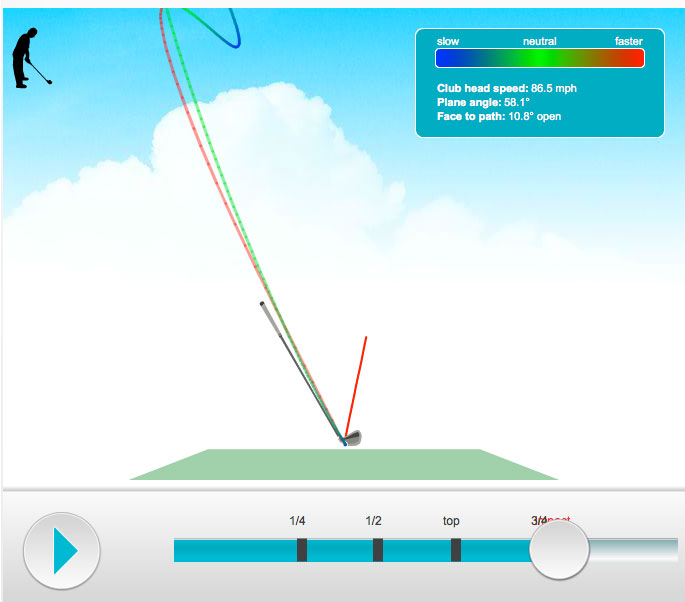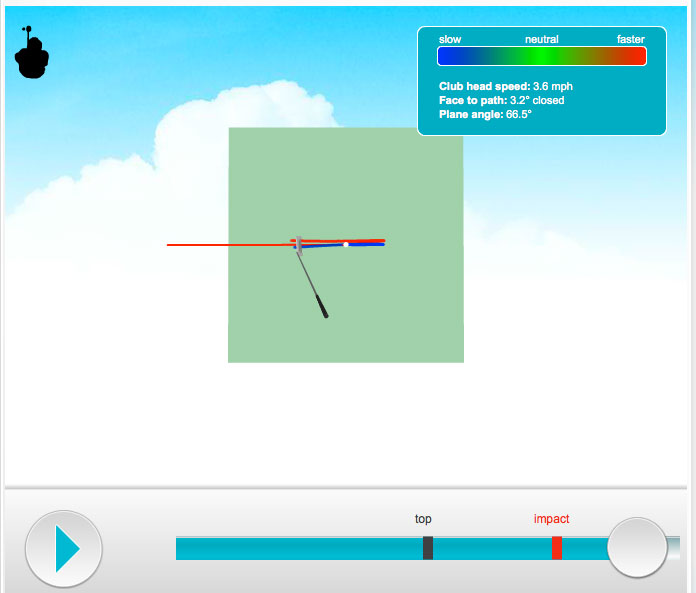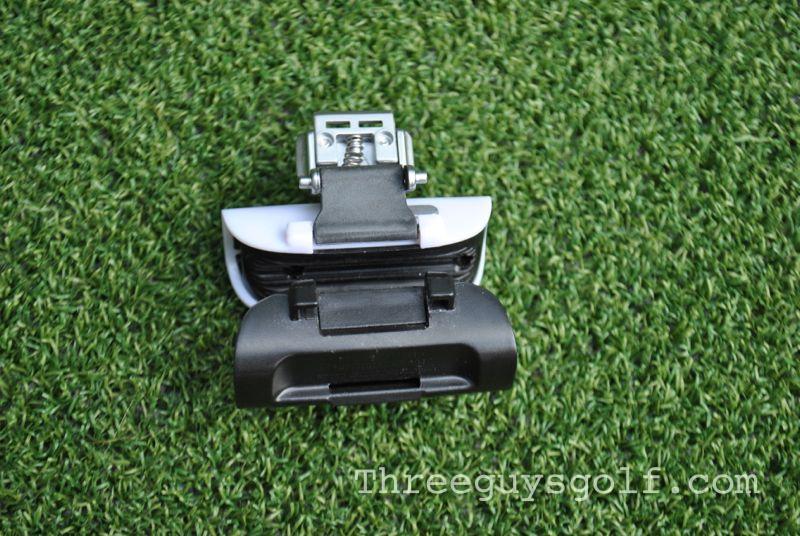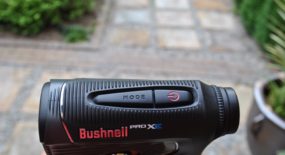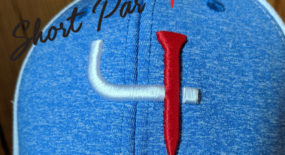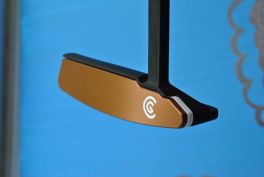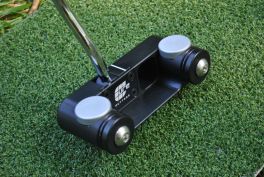About five years ago I got a free pass for a GolfTec lesson which included getting hooked up to about 8 electrodes while being stared at by a wide-eyed kid (Note: that is NOT me in the picture). The idea is to provide you with a complete swing analysis then show you how to get it to look like a PGA Pro that you resemble (go figure that out . . .). Now, I am personally not a fan of GolfTec, but I was blown away by the graphics and tools that it provides. For the first time I could really see what my swing looked like. I could see my takeaway path and how the club was aligned at impact. The fact that they wanted to turn my swing into Ernie Els is another story.
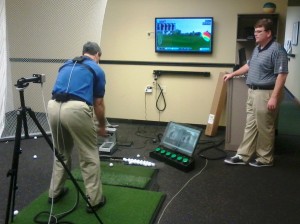
Ahh, this does not look promising…
Since that time, I have wished that there was an easier (and less expensive way) to get similar swing diagnosis. Fortunately, there is now a way, and it is called Swingbyte. This little contraption easily snaps onto any club and is then linked up to your phone or iPad via Bluetooth.
So while Swingbyte does not give you every data metric available, it does provide you with enough to better understand and work on your swing. For me, that primarily means swing path. Like a lot of amateurs, I struggle with an over the top swing. With the Swingbyte, I can get instant feedback on my swing path. Even better is that I don’t even have to hit a ball. That’s right, I can make swings on a mat or ground and get the same results.
Now, rather than heading out to the range, I can just step outside, lay my phone down next to me and take swings to hone my preferred swing path. Really, that is the key, being able to make a swing (or swing adjustment) and see what it really means.
Additionally, if you want to hit real balls or 1/2 distance balls into a net, you are able to get accurate data on club speed, face address, face path and club path. Basically everything you get when you hit ball in a simulator.
As I mentioned the Swingbyte attaches to the top of your golf club right below the grip. The clasp is easy to put on and take off, so switching between clubs is not an issue. While every so often the clasp comes off, for the most part you don’t have to mess with it.
In order to connect your device, you just have to get the Swingbyte app and then connect to it by choosing Bluetooth in your settings. This will work on both a phone and iPad. The phone is fine, but checking the graphics is far easier to see on a larger iPad. That way, you can just lay the iPad on the ground and glance down at it after every swing. Performance wise, the Bluetooth works pretty well. Some days it gives me a bit of trouble and I have to recalibrate it or restart it, but for the most part it stays connected.
If you want to further investigate a swing, you are able to choose from a number of vantages like overhead, behind and 360 degrees. I find the down the line view works the best. Additionally, the color of the path lines will indicate club speed at any given point so you can work toward having the most power at impact.
The other features I like to use is the history and “compare swings”. Each and every swing you make is logged into the system so you can view them on the web. This helps you to see progress in metrics like swing speed. You can then compare swings from different times so you can determine if the changes you are trying to make are actually sticking.
Another available function is the side by side video and swing analysis. Using your phone or iPad, you can video your swing and then watch it with the swing tracer to check your technique at any point. While this feature seems very useful, I never used it because I feel like I get the required feedback and swing information with just the lines drawn by the swing tracer. However, I could definitely see this being useful for a coach to use to help with teaching a student.
And don’t forget your putter. Swingbyte can also help with the flat stick. For the putter analysis, everything is the same but on a smaller scale. This way you can really see what type of putter you are (pendulum or arc). Plus, you can see if you are making square impact or if you have an open or closed putter face.
Swing training aides are a tricky business. I would bet most end up collecting dust after the new car smell has worn off. This is partly true with Swingbyte as I don’t want to take it out to the range every time. The good news for Swingbyte is that it is nearly as useful at home since you do not need to hit actual golf balls to get in some training time and analysis. In fact, I have taken 70% of my Swingbyte swings at home either with practice swings or golf balls into a net.
The final bit of good news is that Swingbyte is darn cheap for what you get. Similar aides like Trackman (albeit a lot more powerful) are thousands of dollars. Swingbyte is $169, giving you a lot of bang for the buck.
Golf is obviously a hard game and improving requires that you a least have a decent idea what you do and what your are trying to do. Without understanding your swing, you are kind of chasing ghosts. Swingbyte is a great tool to give you real data on how you swing the club. It will also allow you to experiment with your swing to see how the swing plane and club impact is affected in nearly real time. For me, it was a huge help in grooving a take away that got my club in a better position to fire down the line. Now, it is just a matter of coming back to it every so often to make sure I am still on track.
You can learn more on the Swingbyte website.


